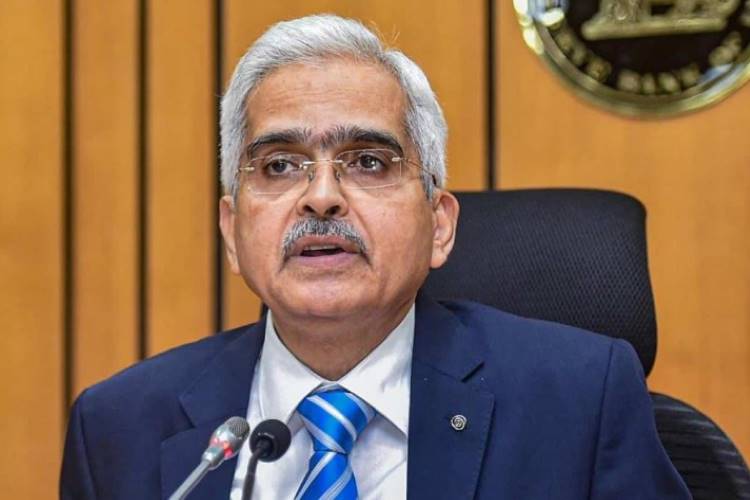
The Monetary Policy Committee of the Reserve Bank of India raised the policy repo rate by 35 basis points in its December meeting to 6.25%. There are a couple of factors that need to be considered to understand the rationale behind the smaller quantum of interest rate hike after three straight hikes of 50 basis points each.
The domestic retail inflation seems to have peaked with October number falling to 6.8% year on year compared with 7.4% in September. Secondly, the US Fed has given a clear indication that the pace of rate hikes will slow in the coming months. However, the RBI Governor was categorical in his statement that the war on inflation is not over yet as core inflation remains sticky at higher levels and domestic food inflation remains exposed to international factors and weather.
READ I Higher remittances to India bring cheer, but looming recession threatens disruption
Cumulative repo rate hike at 225 bps
Cumulatively, the RBI has raised the repo rate by 225 basis points so far in this hiking cycle. The central bank retained its stance of remaining “focused on withdrawal of accommodation”. It cut the real GDP growth forecast for 2022-23 marginally to 6.8% from 7% in its September policy. Real GDP in Q2 2022-23 grew by 6.3%, in line with the RBI forecast.

Global growth outlook remained gloomy with accentuated headwinds from protracted geopolitical tensions, tight global financial conditions and slow international demand. On the domestic front, growth remains resilient with urban consumption improving on the back of higher discretionary spending. Air traffic grew by 30% year-on-year in October and petrol consumption rose by 8.8% during the same period.
Passenger vehicle sales increased by a robust 29% in October, indicating traction in discretionary spending. Rural demand is gaining momentum with tractor sales rising by 23% in September and two-wheeler sales by 13.5%. Rural wage growth remained steady at 5.8%. Agriculture once again showed resilience with a growth rate of 4.6% in the second quarter of 2022-23. Rabi sowing had a good start with area sown increasing by 7% from the normal.
READ I Big brother watching: Proposed Digital India Act will cut both ways on privacy matters
Data point to multi-sector recovery
Manufacturing and service PMIs continued to have readings above 50, indicating expansion. Merchandise trade got impacted due to global headwinds with exports declined by 16.7% in October and trade deficit widened to $26.9 billion. However, service export continued to register strong growth of 29% during the April-October period.
On inflation, the MPC retained its forecast of 6.7% for 2022-23. However, it raised the projection by 10 basis points for Q3 and Q4 of 2022-23 from its projection in September. Inflation is expected to moderate from its Q2 level of 7.04% with higher rabi sowing but is likely to stay above MPC’s upper tolerance band of 6% for most parts of 2022-23. CPI inflation in October moderated to 6.77% from 7.41% in September. Food inflation moderated to 7% from 8.4% in September as vegetable prices ebbed sharply to 7.8% in October from 18.2% the previous month. Prices of cereals and spices remained elevated.
Core inflation stood at 6.2% in October driven by higher inflation in personal care and effects, recreation and amusement, household goods and services, clothing and footwear. With the opening of service sector, the core inflation is expected to remain elevated. Moreover, uncertain outlook of the dollar due to global volatility emanating from Russia-Ukraine war and lingering Covid-19 keep the magnitude of imported inflation uncertain.
Systemic liquidity remained in surplus of about Rs 1.2 trillion at end of November. Banking system liquidity is expected to be in surplus as currency in circulation will moderate post festive season, higher government spending in last few months of the fiscal year and higher inflows of dollar with net positive FPI inflows. The government has an estimated cash surplus with RBI of about Rs 2.6 trillion. FPIs had net inflows worth $4.1 billion in November and $1 billion so far in December.
The MPC is likely to deliver another 25 basis points hike in February 2023 policy to take the terminal repo rate in this rate hiking cycle to 6.50%. The RBI may reduce the overhang of liquidity surplus and expect banks to draw down from their standing deposit facility and variable rate reverse repo balances. The 10-year benchmark yield is expected to hover around 7.20-7.40% in near term.
(Sudarshan Bhattacharjee is Principal Economist at Yubi.)
